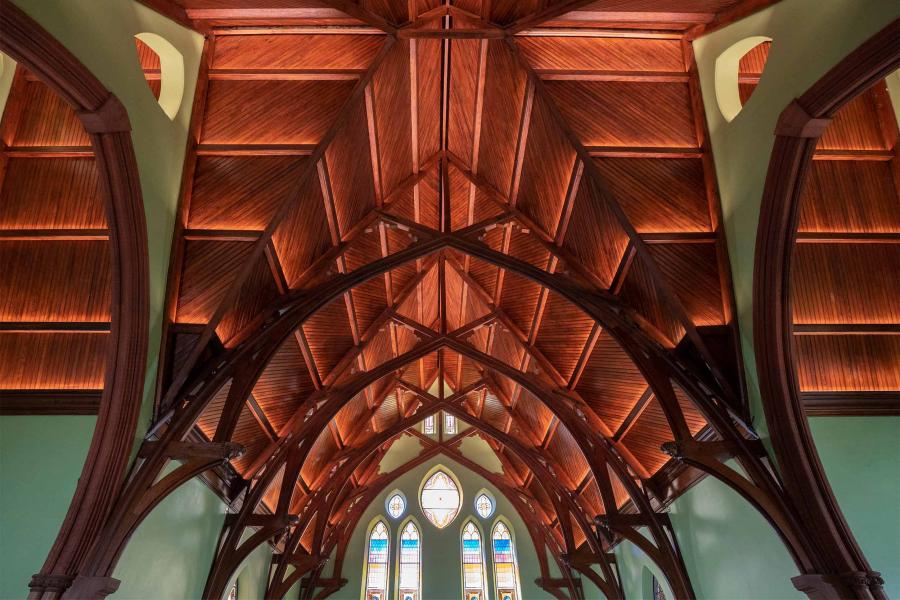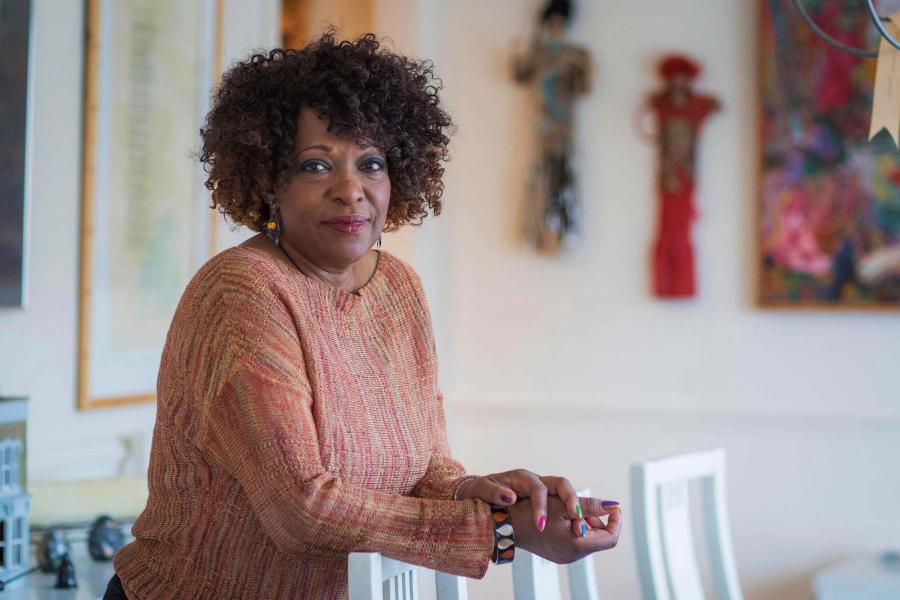Will Rourk's love of history is infectious.
Rourk, a 3D technologies specialist at the University of Virginia Library's Scholars' Lab, documents historic architecture and artifacts, large and small, by 3D scanning them with state-of-the-art equipment. His enthusiasm shows in his smile as he talks about his work and his students.
Recently in an artifact-packed warehouse, Rourk directed three architecture students enrolled in ARH 5600: 3D Cultural Heritage Informatics, a collaboration between Andy Johnston and the Historic Preservation Program in Architectural History and the UVA Library, in the use of structured light scanners, recording the topography of bricks unearthed in an archaeological dig at Monroe Hill House, James Monroe's farmhouse that pre-existed the University. Mark Kutney, lead conservator for the University with Facilities Management, assisted.
Sophie Musharraf, Faye Davies and Jasmine Zheng, all third-year architectural graduate students, hovered closely as Rourk demonstrated the scanner and how the data appears on a computer screen. He held the scanner, a black box a little more than a foot long with several bright white lights, in one hand as he moved it over the brick. At the same time, he studied the image on the computer screen, which presented the scanned image of the brick in color.
"The more detail we can provide, the greater we can express the details of the historic narrative," Rourk said. "Ultimately, we learn from the past to apply lessons in the present to make a better tomorrow. At least that is the hope. I am driven by the fact that we are providing baseline data that will be used well into the future because it is being managed and archived by the Library."
Rourk has spent 27 years collecting data with 3D technologies for the use of the scholarly community. Now he is passing on his skills, working with the School of Architecture's Department of Architectural History to teach students how to make their own history-preserving scans.
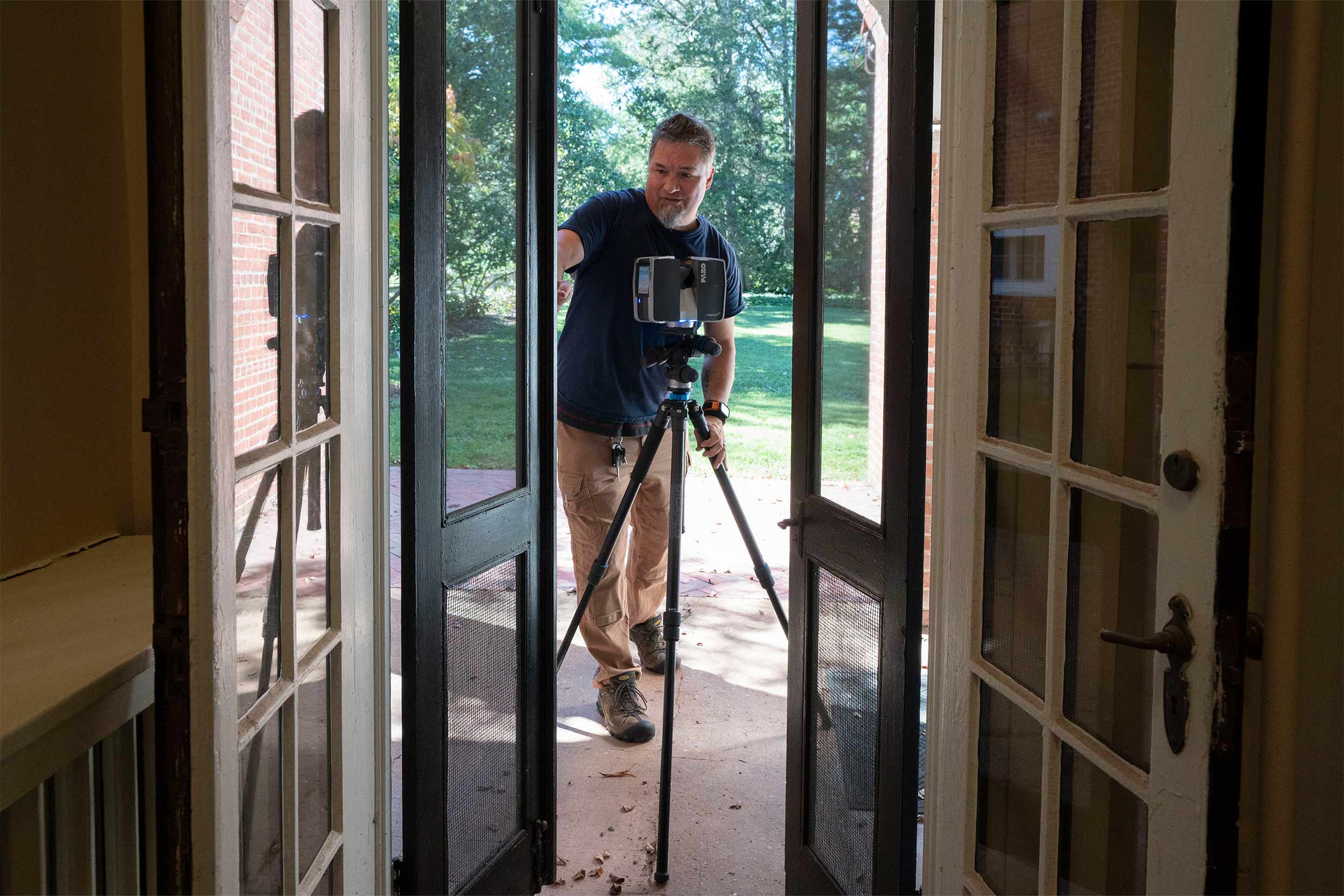
In the warehouse, Rourk showed the students how to manipulate the scanner to get all the details of the object. "You are measuring objects in 3D at the micron level," Rourk advised, showing them how to get the proper scanning distance from their subject and where the scans should overlap.
The week before, Rourk's students measured a larger artifact, using laser scanners to record the details of Morea House on Sprigg Lane. The house was built by John Emmet, the University's first professor of natural sciences and the first resident of Pavilion I. The laser scanners, which systematically sweep a room or a building with invisible beams and record the data they return, recorded the rooms of the house, down to the millimeter, so that eventually people can don virtual reality goggles and walk through the structure without leaving the Clemons Library Virtual Reality Lab.
"With 3D scanning, you're not just scanning the subject, you're scanning everything within a 30-meter radius of the scanner," Rourk said. "So you're collecting a lot of data that's out there, but you never know when some of the data that you weren't focused on is going to be important. You're collecting context."
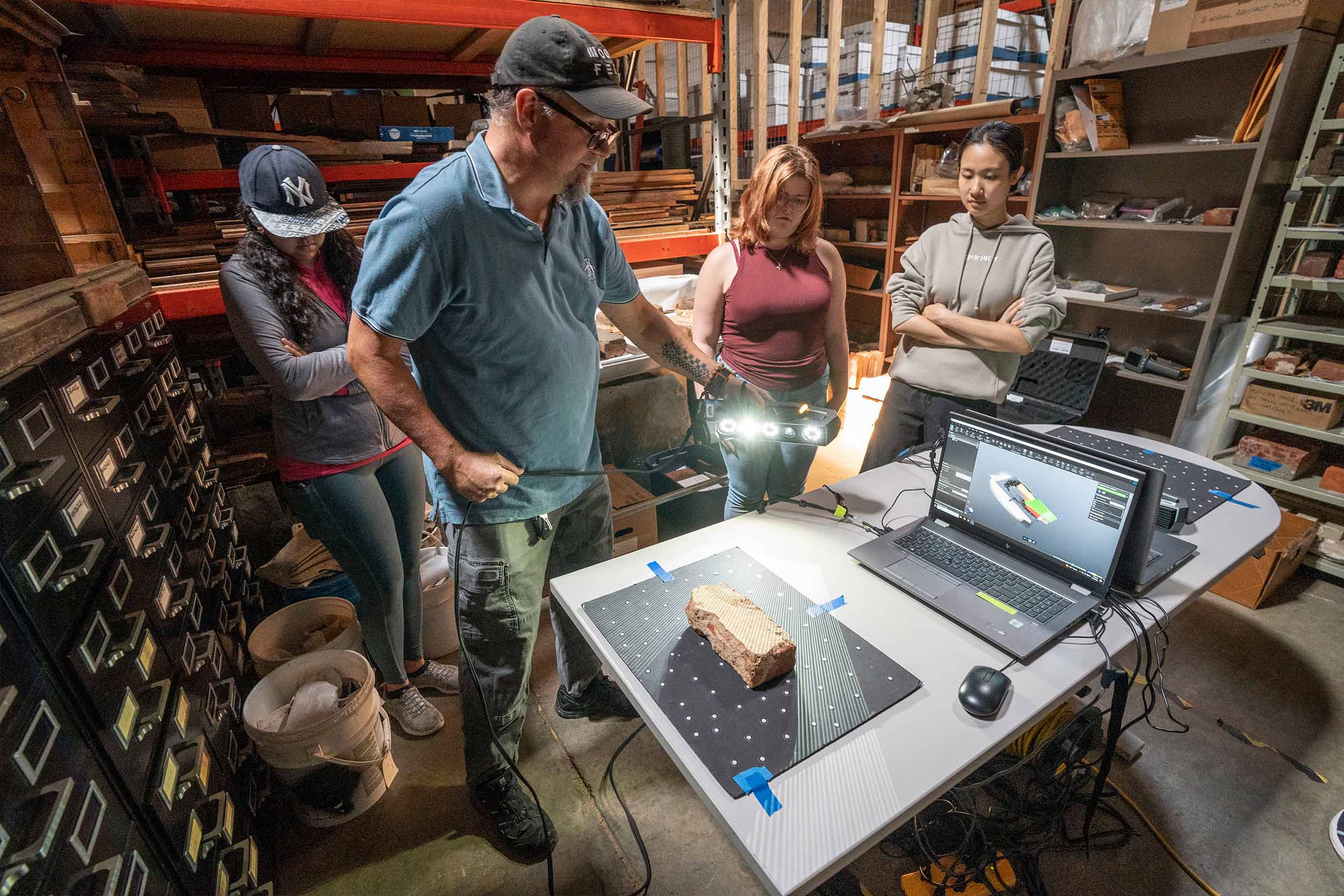
Rourk can envision a time when 3D scanning is commonplace.
"One day, 3D data collection will be a standard process in which architecture and engineering offices, as well as libraries and archives, will engage," Rourk said. "Things have to be rescanned as those things change over time and new data stored along with old data to provide adequate documentation of historic subject matter. We are starting that process now and the Library is making it available."
3D scanning can also become a standard tool for architects and architectural historians. Musharraf, of Vienna, is learning these scanning techniques because they add to her toolbox of skills.
"I had more fun doing this than I expected," she said, noting that Rourk's dedication and enthusiasm improved the class. "It helps that Will Rourk is teaching us and showing us how to do things."
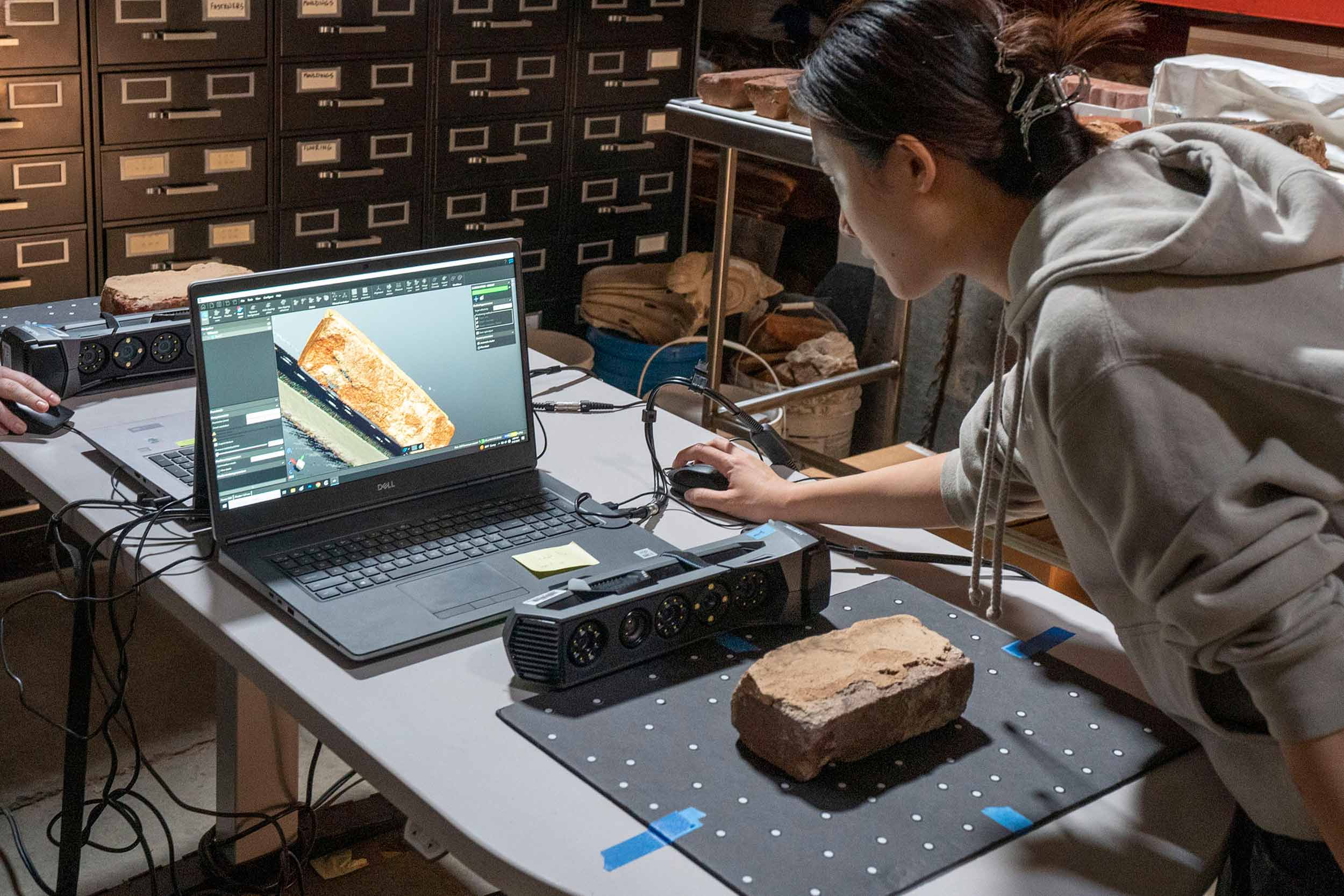
Rourk's colleagues also appreciate him.
"As an architectural historian at the oldest program in the country, I'm deeply grateful to have experts like Will Rourk available to our students," said Louis Nelson, a professor of architectural history. "I first met Will when he was a student in our master's program and I was deeply impressed even then with his digital savvy, but even more, his commitment to deploying these strategies always for the goal of deeper learning."
As a teacher, Nelson takes advantage of Rourk's expertise and availability.
"Will is widely recognized as among the best in his field nationally, and I regularly send my graduate students to work with him to learn his approach to digital documentation," Nelson said.
Rourk said it is important that students become familiar with the buildings on which they are working and develop a relationship with them - lessons he said he learned under Nelson.
"In that program, we would go in and hand-measure a building with a tape measure and grid paper and we would draw it all out. And then we created finished drawings, hand-drawn, ink on vellum. That was what really clued me in to how important it was that students understand scale and spatial relationships through recording a building," Rourk said. "The field methods class I took with Louis Nelson was extremely influential on my current work. And none of this work would be possible without collaboration with Andy Johnston and the Program in Historic Preservation in Architectural History."
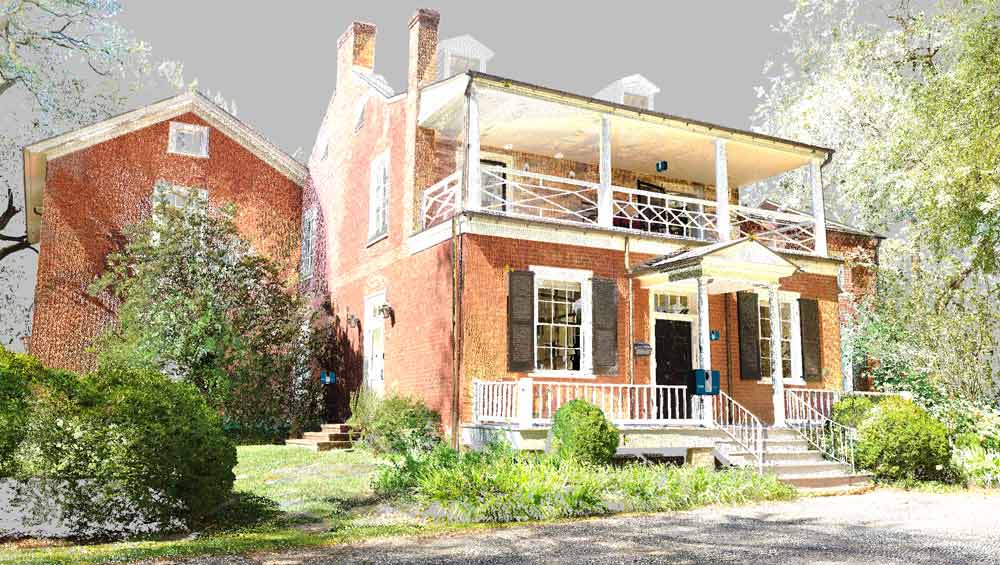
An image of John Emmet's Morea House taken from Will Rourk's scans. (Image by Will Rourk)
"Now they can do that with 3D data, but it's different, because 3D data can be very overwhelming," he said. "It's very important that you control that information to make it useful."
For Rourk, details matter.
"It's important to me that we get all the details that describe the narrative of the space, because every space is part of the historic narrative," Rourk said.
Rourk received a bachelor's degree in architecture from Virginia Tech, but was not enthusiastic about getting into the field, initially.
"I was more construction-oriented, so I wanted to do design-build," Rourk said. "I started working as a carpenter in Charlottesville, but I also had a lot of computer graphics skills I acquired while in architecture school."
Rourk applied for an opening at what was then called the Multimedia Resource Center at UVA Library, where he worked on digital slide scanning, a job he split with carpentry. Eventually he took a full-time position at UVA, and while working there, got his master's degree in architectural history.
While Rourk is well-schooled in the latest tools, he still maintains an old-school attitude. He even carries a folding ruler with him for field research.
"We don't want to forget the traditional methods," Rourk said.

